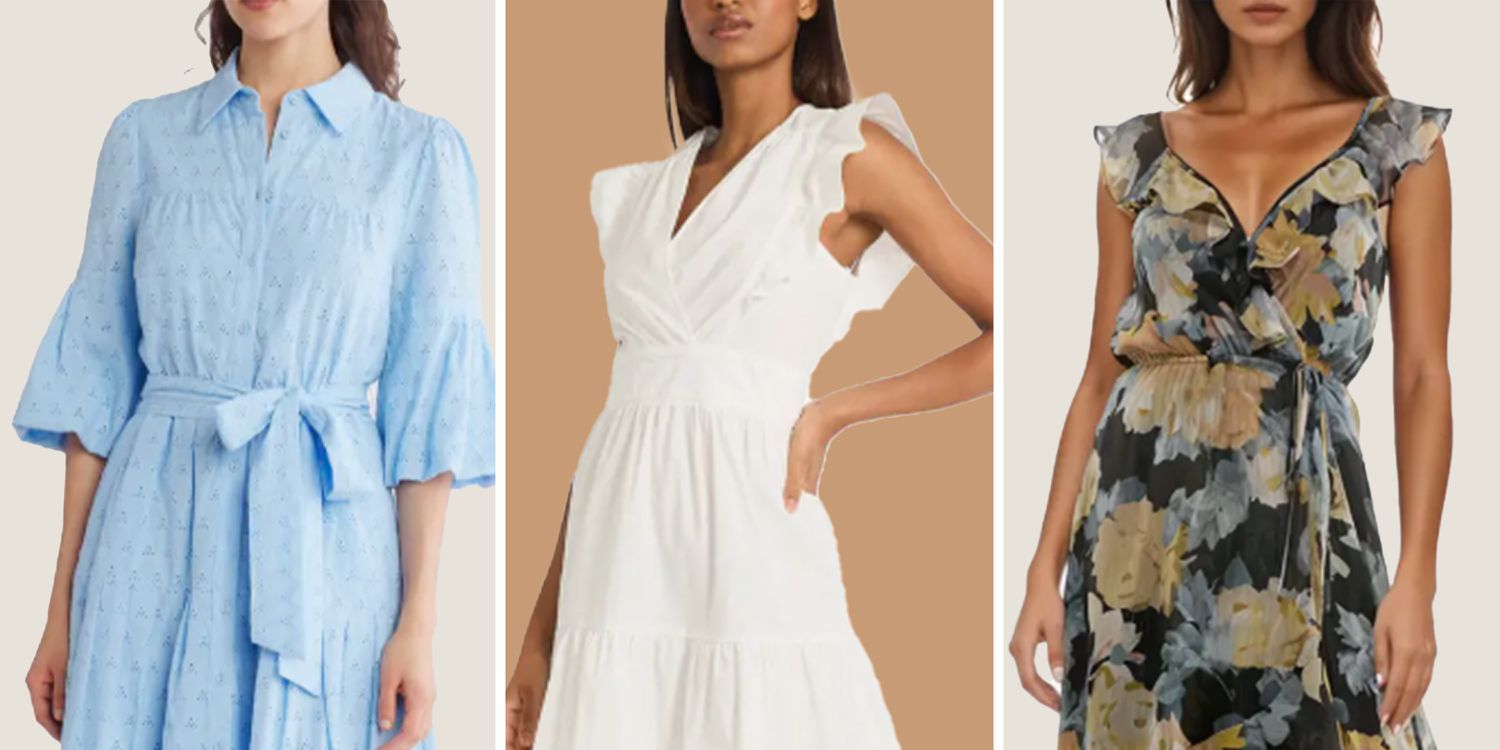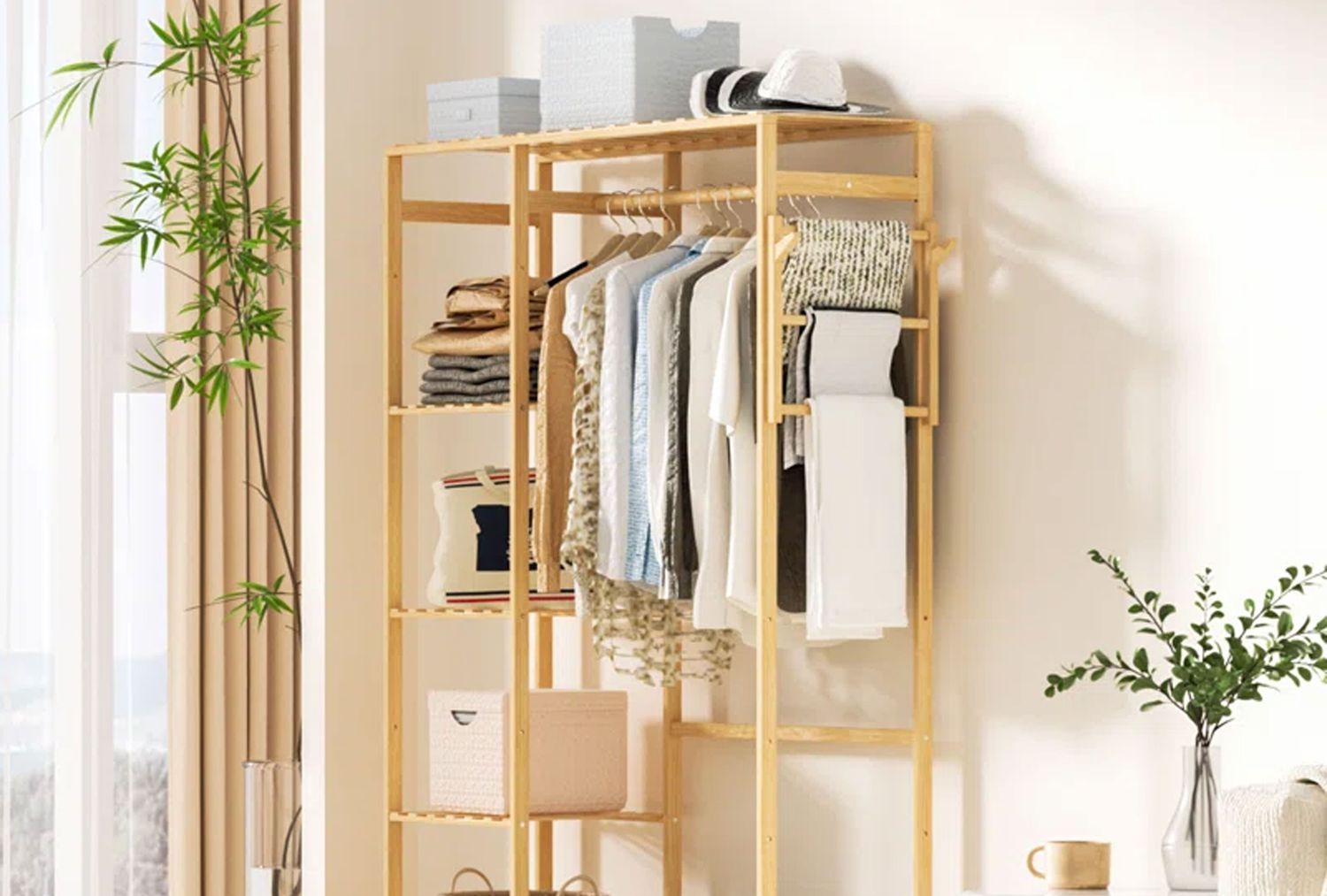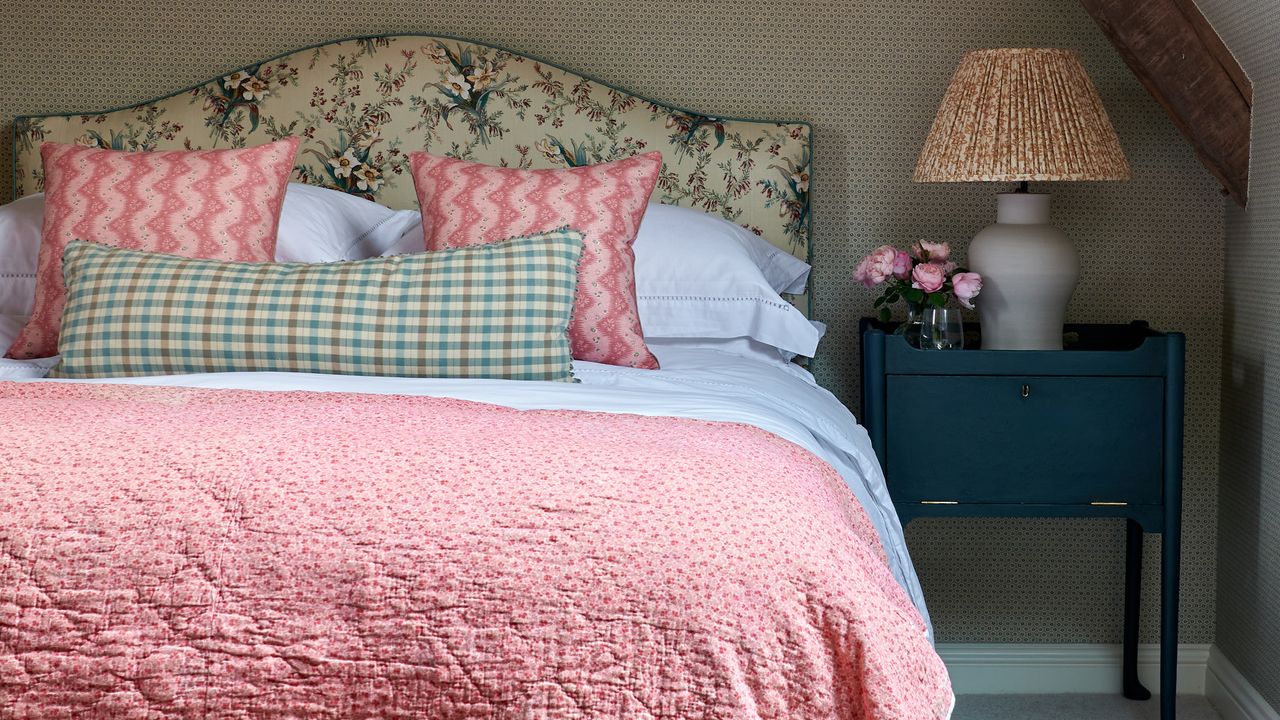
How to Store Your Bulky Winter Knits, According to the Experts
It’s a tale as old as time: in the warmer weather, your winter knits take up unnecessary space in your closet. They need to go somewhere, but they’re so big and heavy that you can swiftly run into storage problems. They’re also delicate and can easily get ruined over months in storage. Fortunately, we asked the experts how to store your knit pieces, without damaging them or crowding the rest of your closet.
“Those cozy sweaters, cashmere, and wool pieces can be bulky, but with a little care, we can make them look beautiful and keep them in pristine condition, even during the off-season,” says Rachel Rosenthal, an organizing expert. And spring is actually the perfect time to go through your heavier pieces and set up a closet organizational system, explains Tara West, award-winning fashion stylist. “You can put away your big knits by mid-March as the weather gradually begins to change. You won’t need the big knits during the warmer afternoons,” she notes.
If you’re looking for concrete storage tips or don’t know where to start, read on.
What to Consider
Getty
Pile Them Up
Take stock of your wardrobe and categorize your pieces. This is the moment to ask yourself which knits you wore and which stayed on the shelf, and whether it’s worth storing those unused pieces. “If there are any sweaters you no longer wear or that don’t fit, consider donating them to make room for new items. Keep a donation bin near your closet for easy sorting as you go through your items. This will help keep your collection purposeful and intentional,” says Rosenthal.
She adds that for the in-between months, it’s best to create a “wear” pile for pieces you’re still reaching for and a “store” pile for those you’re ready to store away. “This can help streamline the process and prevent you from wasting precious time digging through bins,” she says.
Clean Your Pieces
Don’t store your pieces until they’re well-cleaned, even if you have to invest in a dry cleaning service or gently hand wash each garment. “Natural fibers like wool and cashmere can trap oils and odors, which, in turn, attract pests like moths. Clean knits stay fresh and in great condition, which makes a huge difference in the long run,” says Rosenthal.
Consider Wardrobe Rotation
Try not to think of your clothes in static terms, with a distinct “cold” and “warm” weather wardrobe; this can lead to overcrowding (and missing great pieces in transitional weather). Instead, think about gradually rotating your clothes. “When the weather starts to shift, make sure you pack away the winter knits and bring forward your lighter layers,” says Rosenthal. “This not only gives your knits the breathing room they need, but it also helps maintain an organized and seasonal approach to your wardrobe.” Once you’re no longer in need of your heavy knits, “store off-season sweaters in less accessible spots, ensuring current-season items are easy to reach,” says West.
Think About an Organizational System
It’s easy to default to a haphazard storage system, especially if you need to make room for your summer items. But try to be thoughtful. “Organizing your knits by color or style can make it so much easier to pick out outfits in a hurry. If your wardrobe consists of a lot of neutrals, you can organize by color family, or if you have several types of knits (cable-knit, turtlenecks, cardigans, etc.), you can store them separately for easier access,” says Rosenthal.
How to Pick the Right Storage Organizers
Getty
Avoid Plastic
Rosenthal says that plastic bins can trap moisture, which is “not ideal for your luxury pieces.” Instead, she says it’s best to go for breathable fabric bags or linen storage boxes (which can also look aesthetically please inside a closet). “They keep your sweaters safe from moisture and pests while still allowing your clothes to breathe,” Rosenthal says.
Use Dividers
You can keep your knits separated with adjustable drawer dividers or (non-plastic) bins. “This is a great way to avoid any piling or shifting of garments, ensuring each piece stays in its place and is easy to access. For a more luxurious touch, consider using velvet-lined dividers,” says Rosenthal.
Make the Most of Limited Space
This is particularly applicable when you’ve got a small closet. “If you don’t have much drawer space or want to keep your knits within easy reach, a hanging sweater shelf could be the solution,” says Rosenthal. “These shelves keep everything organized and visible, but they also offer a great way to display your favorite pieces in a beautiful, functional way.”
Protect Your Specialty Pieces
Take a step back and assess the materiality of your wardrobe. What pieces need special upkeep to keep them well-maintained? “Wool and cashmere need to be kept airtight to protect them from pests, while silks and other delicate fabrics should always be stored flat in a cool, dry spot,” says Rosenthal. For cashmere or wool, “use natural repellents like cedar blocks or lavender sachets,” says West. There are also natural moth-repellant pouches, adds Rosenthal. “I place these between the folds of my knits to ensure they stay fresh and safe.”
For more expensive or sentimental pieces you’d like to protect, “opt for wool-specific storage bags,” Rosenthal says. “These often come with additional features such as moisture-proof liners, which are perfect for preventing any long-term damage from humidity or pests.”
How to Store Your Knits
Getty
Fold, Don’t Hang
Now, it’s finally time to put everything away—carefully and thoughtfully. “Hanging sweaters can stretch delicate fabrics like wool or cashmere, causing shoulder bumps. If necessary, fold them in half and drape them over padded hangers,” says West. If you’re putting them in drawers or closet shelves, “to make the most of your space, place heavier knits at the bottom and lighter ones on top. It keeps everything organized and prevents any distortion in shape,” adds Rosenthal.
Keep It Visible
Even when your pieces are safely stored, it helps to have a system where you can still see them. For open shelves or drawers, “fold sweaters horizontally and stack them,” says West. “Limit stacks to five sweaters to prevent toppling and maintain visibility.” For closed drawers, “file fold sweaters vertically for better visibility and space efficiency,” she adds.
Compress Them
For those really heavy, bulky pieces, “vacuum-sealed bags reduce bulk and protect sweaters from moisture and pests. Store them under the bed or in the back of your closet,” West recommends. But be careful not to overdo it, says Rosenthal. “I suggest using compression cubes — but only lightly, as over-compressing them can hurt the fibers. If you’re short on space, under-bed storage works too, but just make sure everything is stored in breathable containers.”
Make Sure It’s Climate Controlled
Wherever and however you store your knits, make sure they’re away from heat and moisture. “Luxury knits need to be kept in a cool, dry place away from direct sunlight. This helps prevent any fading or weakening of the fibers. I also recommend using a dehumidifier in your closet if you live in a particularly damp area — humidity can lead to mildew, which can ruin your favorite pieces,” says Rosenthal.
Keep an Eye on Your Pieces
Even after you’ve stored your knits, you’ll want to monitor them. “I always recommend a quick check for moths or other pests every few months, especially in the colder seasons when they’re more likely to seek out warmth,” says Rosenthal. “Regularly rotate your knits and give them a light shake to make sure everything stays in good condition.”










